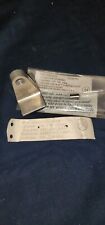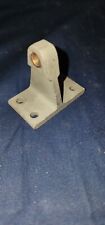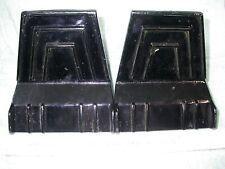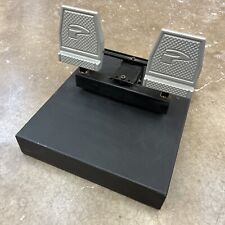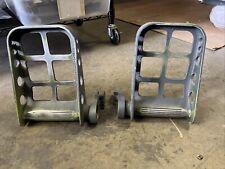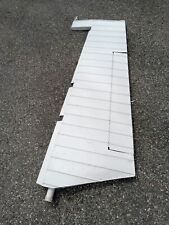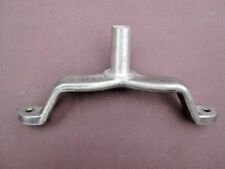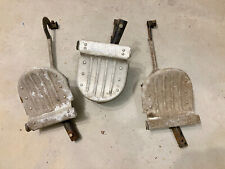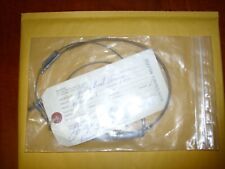But you say, “Lift and G are the same, right”?
Well…not quite! They seem to be the same, but, in an air combat maneuvering sense, they are not. Here’s why.
The difference lies in what you are doing. If your maneuvering requires one G flight, then think of flaps as providing lift. But, if your maneuvering requires more than one G, then think in terms of G.
For example, in takeoffs and landings, you are operating at one G or there abouts. All you  want is “X” amount of lift (the weight of your aircraft) to offset gravity as you either takeoff or land. This MiG-19 has weight and lift just about balanced as it comes down final.
want is “X” amount of lift (the weight of your aircraft) to offset gravity as you either takeoff or land. This MiG-19 has weight and lift just about balanced as it comes down final.
But in situations where you want more than one G…that becomes an entirely different story.
How so?
Because the idea that if a little of something is good, then more should be better may not be the case.
So it is with flaps…or at least it should be. By that I mean that what should happen (as in real life) might not happen in a sim because of the manner in which it is programmed.
Let’s recall our earlier discussion about flaps, lift, and drag. A little bit of flap (takeoff setting) produces a good increase in lift at little expense in drag. But a lot of flap (landing flap setting) produces just the opposite…a lot of drag for not much more lift. At the same time, the stall AOA has been decreased, so when pulling on the pole, your stall margins in terms of pitch movement are reduced as well.
The point is that landing flaps are for just that…landing. Not dogfighting.
Which leads us to the good stuff! Dogfighting! Some may think of this as slowing down and turning tighter than one’s opponent in order to “get on his tail”. We call this “turning and burning” or “stall fighting”. Some aircraft are particularly good at this…some are not. What makes the good ones “good” is their ability to achieve significant G at slow speeds. What makes the others “bad” is that to achieve the same G, they have to go faster…sometimes much faster.
Why is this important? Because G is what determines how tight your turn radius is or how fast your turn rate is. In dogfighting, you want a small radius and a high turn rate. More G makes these numbers improve, while airspeed increases make those numbers get  worse…so G becomes all important when engaging in a turning fight. The equation for turn rate and radius makes this clear.
worse…so G becomes all important when engaging in a turning fight. The equation for turn rate and radius makes this clear.
This is where flaps enter the picture. The idea is to get the most G at the slowest speed. The pilot, knowing that speed is his enemy, slows down to improve his numbers. But he knows that if he gets too slow, he’ll stall. So he puts out flaps to lower his stall speed.
That way, he expects that he can continue to pull G at this lower speed and get the desired turn performance.
There is a potential problem to this way of thinking! Some folks might think that they can get more G if they lower flaps. Maybe…and a very big “maybe” at that! Let’s remember that the ability to pull G for a given wing configuration is simply a matter of speed. At some speed, the pilot will be able to pull max G with the flaps up. If he thinks that using flaps above these speeds will give him an increase in performance, he is wrong.
Why? Because the plane can already pull max G. There is no room for more G unless the pilot wants to break the plane (over-G it). Here is a diagram that shows the flight envelope as a function of aircraft weight, G, and indicated airspeed (IAS). The left side of the envelope is the stall boundary. It slopes up as airspeed increases until it runs into the top boundary, the max G line. The right side of the envelope shows the max airspeed boundary. Note that at about 270KIAS the stall line intersects the max G line. At speeds above 270KIAS, the pilot is limited by his G limit. Below 270KIAS, he is limited by the stall boundary.
This is a “flaps up” diagram. The airplane is G-limited at speeds above 270KIAS. Below that  speed, note that the G capability drops off as speed decreases. So, below 270KIAS, is it possible to regain the ability to pull max G if we use flaps? The answer is a conditional “yes”.
speed, note that the G capability drops off as speed decreases. So, below 270KIAS, is it possible to regain the ability to pull max G if we use flaps? The answer is a conditional “yes”.
You can use flaps to increase turn performance as long as you do not exceed the flap limiting speed or max G limit of the airplane. In these cases, you can expect a reasonable gain in turn rate, however, do not expect to see much of a change in turn radius. How much gain in turn rate? Few energy management (EM) diagrams show the outcome of flap use, but we can make a pretty good estimation of what the diagram would look like by using a simple math equation to compute stall speeds with flaps down at G loads from 2 to the max G value. Doing this, we can arrive at an EM diagram like the next figure.
The blue line outlines the “flaps up” flight envelope for the given altitude and gross weight. The  left side is the “stall line”, the top portion is the max G line, and the right side is the max airspeed part of the envelope. The green line on the left side is the new computed flaps down stall boundary.
left side is the “stall line”, the top portion is the max G line, and the right side is the max airspeed part of the envelope. The green line on the left side is the new computed flaps down stall boundary.
Looks great, right!! Unfortunately, it may not be quite this easy. The problem here is the design of the particular flap system and the maximum speed that the flaps may be used at. Some fighters had a “maneuvering” or “combat” flap setting that had a pretty high max speed limit. Here, for example, are the flap limiting speeds for the P-51. The P-51 pilot could use the first notch (flaps 10) up to 400KIAS. But, as the previous chart showed, the P-51 could reach the max G limit at 270KIAS. So what good will the flaps do above that speed? Not much other than act as a speed brake.

Other fighters have flap designs that are not so capable, particularly in jets where the speed range is wider. In these aircraft, flaps may be used to improve turn performance, but only up to the flap limiting speed. Anything over that speed is a no-no. What I mean is that the pilot should not deliberately exceed the flight manual limitations regardless of the effect on the flaps. Whether such action actually causes damage is irrelevant…don’t exceed the flap limits!
Problem is…not all of our sims model realistic flap limits. Some don’t even tell you what the limits are! You can throw those puppies out at warp 9 and nothing happens! And you might even get a performance increase. If so, bad on the sim for programming the flight model this way, and bad on you too for disregarding the rules on observing limiting speeds!
All of this raises the obvious question…if you want to adhere to the proper speeds, where do you get this info? The problem is, as many of you know, the answer is seldom to be found in sim documentation. Too often, specific numbers such as flap limiting speeds are absent in sim manuals and online help.
And yet, the info is very nice to know, particularly when it’s info that is based on how the sim is programmed. If the sim gives a flap limiting speed of “X” mph, then that should be the speed that the flight model is based upon. Here’s a look at some sims and their documentation of flap speeds and their flight model adherence to these speeds.
IL-2 : No Documentation. Flaps will jam if lowered at high speed and will stay out at high speed with no apparent damage.
CFS2 : Excellent documentation in the Help section on the CD. Flaps come off if the limiting airspeed is exceeded.
MiG Alley : No specific documentation on flap use.
Aces High : Refer to the Help section at the web site for general info on flap use inflight. A few fighters are discussed, most are not. The general advice is to use the first notch of flap for maneuvering. At high speed, the flaps will close to the “up” position.
Jane’s Attack Squadron : Minimal documentation in Training section. No discussion of employment airspeeds. Flaps come off at high speed although this speed is undocumented.
What does this tell us? Only that the developers are lagging behind in providing operating instructions to accompany the inclusion of realistic flaps in most of these sims. It’s nice to have this feature, but it would also be nice to have some guidance on how and when to use it.
And that’s how we’ll finish up this section…with a little advice on how to use flaps in your simulations. By necessity, we’ll primarily be talking about WW2 prop sims and sims that feature aircraft that were in service prior to the introduction of the F-15/16 and Su-27 series of fighters. These earlier aircraft generally had manually operated flaps, and that will be the focus of the following advice…manual operation of flaps to obtain an increase in flight performance.




